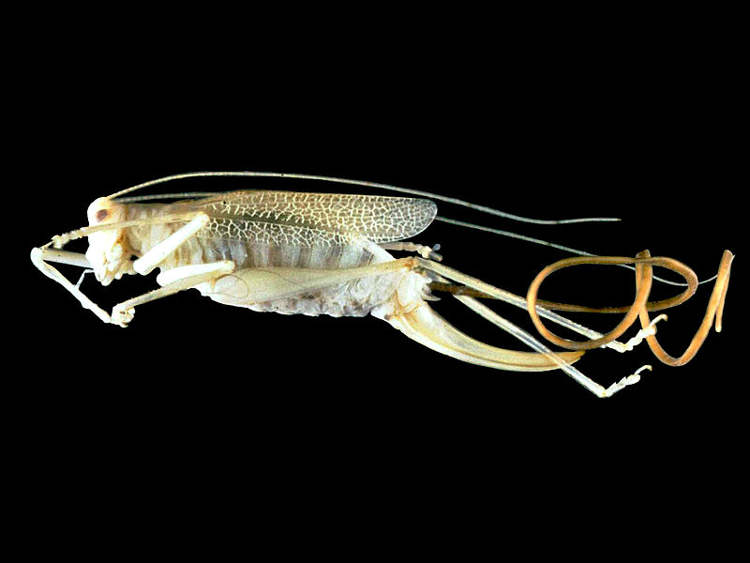The hairworm might not look like much, but it is a sinister parasite that steals its host’s genetic code to manipulate it into deep water, so it can reproduce and start the cycle all over again.
During its larval stage, a hairworm’s first goal is to get eaten by a tadpole or a mosquito. It then lies dormant until this initial host is itself eaten by a larger creature, such as a cricket, grasshopper, or mantis. Once its Trojan horse is digested by the new host, the hairworm breaks out and begins sapping the poor insect of nutrients. This only takes about three months, after which the hairworm somehow manipulates its drained host toward water, where it would never go on its own, to drown. Hairworms breed in water, so after their host dies, they swim to the nearest ball hairworms to reproduce and start the cycle once more. Scientists have known about the worm’s ‘mindsnatcher’ trick for years, but a team of researchers claims to have finally figured out how hairworms actually brainwash their hosts.

Photo: Dbenzhuser/Wikimedia Commons
According to a new study published in the peer-reviewed journal Current Biology, hairworms use a kind of copycat mechanism to replicate chemicals usually produced by their hosts in order to manipulate their behavior. Researchers examined the DNA of the horsehair worm species Chordodes fukuii and that of its favorite host, mantises, and observed that 1,420 Chordodes genes closely matched those of its host.
It is believed that this kind of horizontal genetic code transfer occurred slowly, with hairworms stealing small pits of code over long periods of time. The genetic transfer generally happens vertically, with parents transferring it to their offspring, but in this case, the worm is able to basically steal bits of mantis DNA directly. It is this genetic similarity that allows the parasite to then produce chemicals like dopamine to manipulate mantises into doing something they wouldn’t normally do.
“We found extremely high dopamine levels from some manipulated mantids compared with un-manipulated and un-infected mantids,” study author Tappei Mishina wrote, adding that this was just one of three potential mechanisms used by the parasite.
Just as in humans, dopamine drives motivation and movement in mantises, allowing hairworms to guide them to their doom. Another possible mechanism is activating genes that encourage the mantis to move toward light like that reflected off bodies of water. But researchers also found changes to the mantis’ circadian rhythm, which suggests the worm makes the host more active during the day when it’s more likely to find light reflecting off the surface of water.
The hairworm is just one of the insidious parasites we covered on Oddity Central over the last 16 years. We wrote about the tapeworm that gives its host eternal youth for a price, the barnacle that turns male crabs into females, and the louse that replaces the tongues of fish.












